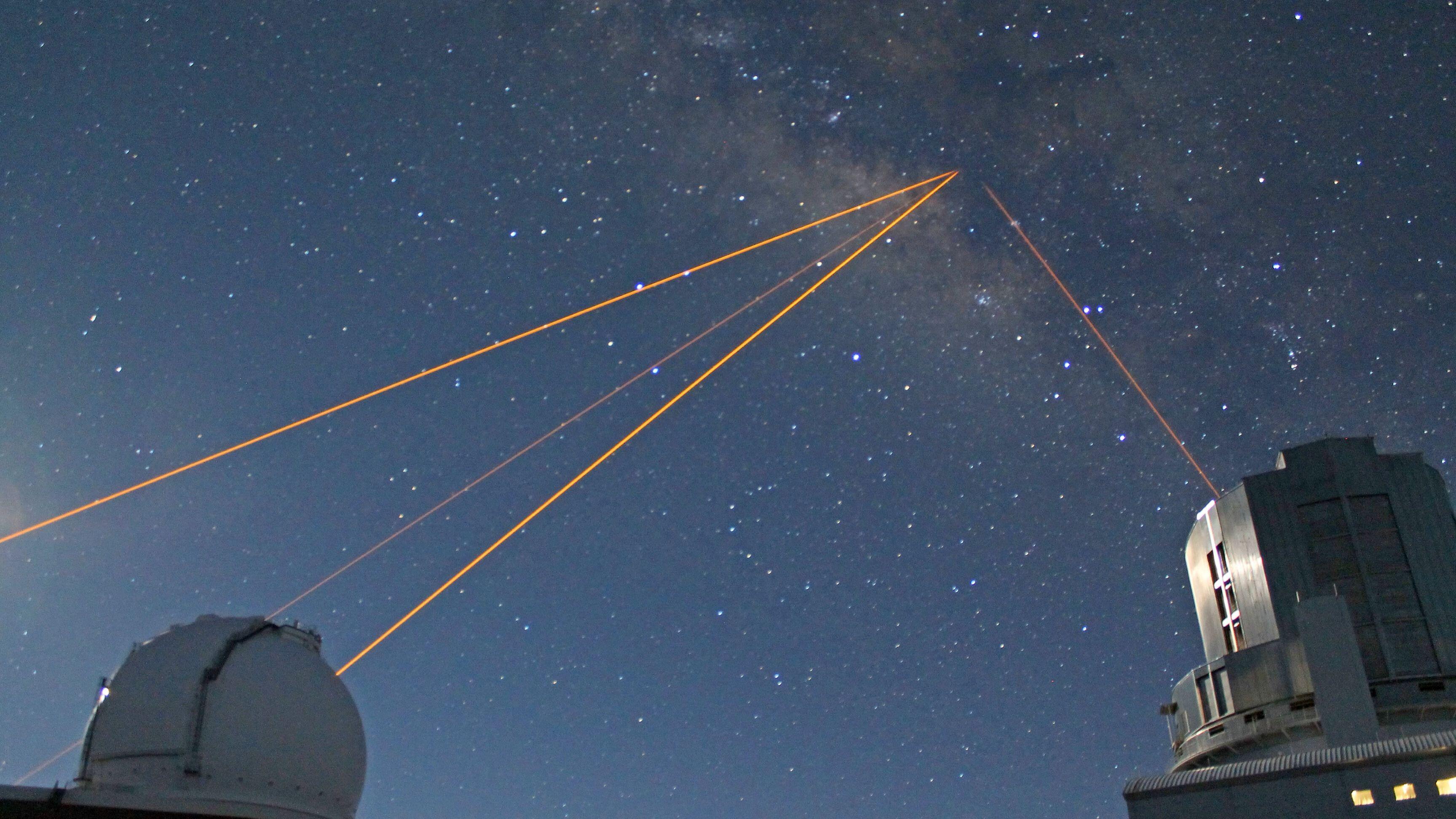
| Detail | : | Low Res. ( 93 KB) / Mid. Res. ( 856 KB) / High Res. ( 3.7 MB) In May 2014, the four large optical-infrared telescopes located near the summit of Maunakea, the Island of Hawai‘i—the Subaru Telescope, the Keck I and II Telescopes, and the Gemini North Telescope—simultaneously observed the central region of the Milky Way Galaxy. The four laser beams were directed toward the Galactic Center to create an artificial guide star, canceling the effects of atmospheric turbulence in real time using the Adaptive Optics (AO) technique. In this video, the Subaru Telescope is on the right side, and the Keck II Telescope is on the left. Although the Keck I and Gemini North telescopes are not visible in the video, the laser beams are emitted from the left side of the Keck II Telescope. At this time, Dr. Andrea Ghez was at the Keck Telescopes studying the supermassive black hole at the Galactic Center. She was awarded the Nobel Prize in Physics in 2020 for this research. (Credit: Dan Birchall/NAOJ) Watch the video |
|---|
